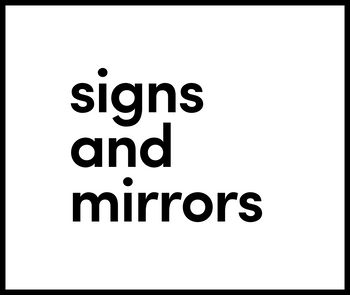Getting more people through the doors of a museum isn’t just about what’s inside it’s also about how you tell the world. Whether you’re working with a tight budget or planning a large-scale campaign, there are plenty of ways to get creative with museum advertising. From partnering with local artists to making the most of social media, here are ideas that can help museums draw in both new and returning visitors.
Museums Can’t Stay Quiet: Why Promotion Is Part of the Job
Even the most powerful exhibits don’t speak for themselves if no one knows they’re there. Today’s museums compete not just with other cultural spaces, but with everything from Netflix to weekend markets. Waiting for visitors to “just show up” isn’t a reliable plan anymore.
Advertising helps museums stay visible, relatable, and accessible especially to audiences who might not think a museum is “for them.” It’s not only about selling tickets. It’s about reminding people what your space can offer: surprise, inspiration, connection.
From digital outreach to street-level visibility, smart promotion creates new touchpoints between your institution and the people you want to reach. The following ideas show different ways to make that connection through stories, experiences, and everyday moments.
1. Capture Foot Traffic with Eye-Catching Sidewalk Signage
For museums located in walkable areas, the street itself is often the first point of contact with potential visitors. A well-placed A-frame sign outside your building can act as both a directional tool and an invitation especially for people who weren’t actively planning a visit. Whether it’s locals passing by or tourists exploring the area, clear and visually striking signage helps turn foot traffic into museum traffic.
At Signs and Mirrors, we design and handcraft sidewalk signs that help cultural spaces stand out in their surroundings. What began as a project for our own New York studio has grown into a full-time production of stainless steel, mirrored, and acrylic A-frame signs used by museums, galleries, studios, and more. Our focus is on durable materials and clean, reflective design that quietly captures attention without relying on loud colors or branding.
For museums, these signs offer a practical way to promote temporary exhibits, mark event entrances, or reinforce brand presence outside the building. Unlike digital ads or printed posters, physical signage lives in the same space as your audience making it a direct, location-specific form of advertising that works around the clock.
Featured Sign Options from Signs and Mirrors
At Signs and Mirrors, we design signage that supports cultural spaces in building visibility and engaging visitors. The following models from our catalog are suitable for use in museums whether for guiding foot traffic, highlighting exhibitions, or enhancing overall presentation.

1. Stainless Steel A-Frame Sidewalk Sign
The #002 Stainless Steel A-Frame Sidewalk Sign is made from a single sheet of 304 stainless steel with a polished finish on both sides. It’s built for outdoor use in low to mid wind conditions and offers solid stability. Available in medium, tall, and large sizes. Can be ordered blank or with a custom logo.

2. Leaning Wall Mirror Sign
The #017 Leaning Wall Mirror Sign is an indoor option with a mirrored stainless steel surface. It’s designed to lean against a wall ideal for museum lobbies, entrances, or exhibit rooms. Lightweight, durable, and available in medium or tall sizes. Offered blank or printed.

3. Acrylic A-Frame Sidewalk Sign
The #010 Acrylic A-Frame Sidewalk Sign is a lightweight, glossy acrylic sign for indoor or low-wind outdoor settings. Comes in black, white, or clear, in a medium size. Suitable for temporary exhibits or modern entrances. Available blank or with custom branding.
2. Host Thematic Nights and After-Hours Events
Evening events help reach people who can’t visit during regular hours. Thematic nights tied to exhibitions, seasons, or cultural moments can bring in different audiences and increase engagement.
Examples include exhibition previews, film screenings, guest lectures, or music nights related to specific exhibits. Museums have also used holidays (like Halloween or Valentine’s Day) as simple hooks to create interest.
Partnering with local businesses for food, drinks, or performance can reduce costs and attract a shared audience. Keep events regular (monthly or quarterly) to build habits and repeat attendance. Use early-bird ticketing or member access to drive sign-ups.
3. Embrace Smartphone Culture and Social Sharing
Visitors use their phones whether museums encourage it or not. Instead of restricting use, make it part of the experience. When people take photos or share moments from your exhibits, they expand your reach without added marketing costs.
Here’s how to make it work:
- Design photo-friendly spaces. Include visual anchors, bold signage, or interactive setups that naturally invite people to stop and snap a picture.
- Use hashtags and signage. Display official tags and handles clearly so visitors know how to share and connect.
- Encourage user-generated content. Run informal campaigns or repost visitor photos to show you value participation.
- Allow filming and photography in designated zones. Make it clear where it’s welcome. Visitors appreciate guidelines instead of full bans.
Smartphone culture isn’t going away. Museums that adapt to it can benefit from organic exposure and build stronger relationships with modern audiences.
4. Offer Behind-the-Scenes Access or Exhibit Previews
Giving people access to what’s usually off-limits adds value and creates interest beyond the regular visit. These formats work well for engaging members, local media, or first-time visitors who want a reason to come back.
Member Preview Nights
Before launching a new exhibition, invite members or subscribers for an early look. Add short talks from curators or staff to give context and make the experience feel personal.
Back-of-House Tours
Offer limited access tours that include storage areas, restoration spaces, or archival rooms. Frame them as rare, timed experiences ideal for fundraising, contests, or higher-tier membership perks.
Virtual Setups
Not everyone can attend in person. Use short videos, livestreams, or photo walkthroughs on social platforms to show exhibit installation, conservation work, or artifact handling.
These approaches help build anticipation, reward loyalty, and make the museum feel more transparent and accessible especially for audiences curious about the work that happens beyond public spaces.
5. Create a Kid-Friendly Experience with Family Programming
Families are more likely to return when children are engaged. A museum visit becomes a regular outing not just a one-time event if there’s something designed specifically for kids.
This can start with basic features: hands-on exhibits, scavenger hunts, or staffed activity zones. Even small additions like puzzles, touch stations, or “find this item” cards tied to current displays can keep younger visitors focused.
Programming matters too. Offer weekend workshops, school holiday events, or guided tours geared toward children. Partnering with local schools or camps can help turn field trips into future visits. A simple reward system like stamps or small take-home items can encourage repeat attendance.
Families look for places that offer value and structure. If kids enjoy the museum, they often bring the adults back with them.
6. Develop a Strong Brand Voice
Museums are not neutral spaces; they communicate values through what they show and how they show it. That also applies to external messaging. A consistent brand voice helps clarify what your institution stands for and builds recognition across channels.
This voice should reflect your mission, your audience, and your content. A science museum might be informative and precise. A contemporary art space might be bold or irreverent. A local history center might focus on community and heritage. Whatever the tone, keep it unified across your website, social posts, exhibit descriptions, and press materials.
Clarity and consistency make it easier for visitors to connect with what your museum represents and for them to recognize your voice when they see it again.
7. Build a Smart Museum Website and SEO Strategy
Most people search online before they decide to visit a museum. If your website is outdated or hard to navigate, you’ll lose potential visitors before they walk in.
Here’s what matters most:
- Clear structure. Make it easy to find hours, location, pricing, and current exhibits.
- Fast performance. Slow sites get skipped. Optimize for speed and mobile use.
- Search visibility. Use keywords related to your exhibits, research, and events. Blog posts and educational pages can drive organic traffic if they’re optimized properly.
- Content updates. Keep your site current. Feature what’s new or limited-time to give people a reason to visit now.
A strong website doesn’t just inform it. Combined with a basic SEO plan, it helps museums stay discoverable and relevant in online search.
8. Collaborate with Local Artists, Performers, and Chefs
Joint projects with creatives outside the museum world can pull in new audiences and change how your space is perceived. Pop-up events and cross-disciplinary shows are especially effective in drawing people who don’t usually visit museums.
Residencies with local visual artists can produce work tied to current exhibitions or permanent collections. Hosting a performance, a dance piece in the lobby, a short play in a historical wing lets people experience your space in a new way. Culinary pairings work too: a guest chef offering a tasting that connects to an exhibit’s theme or era adds a multi-sensory element to the visit.
These collaborations don’t just diversify programming, they generate attention. They give artists a platform, help museums stay flexible, and create experiences worth sharing.
9. Leverage Influencers, Bloggers, and Local Media
People trust personal recommendations more than ads. Partnering with local influencers, niche bloggers, or event-focused platforms helps museums tap into communities that traditional marketing may not reach.
Start by offering preview access to exhibitions or events. Let creators capture content and tell the story in their own style. Focus on those whose audiences align with your own families, students, culture seekers, or tourists.
Reposting their content, tagging them, and offering custom codes or links can help track reach and encourage further coverage. At the same time, don’t overlook regional media outlets and city guides; they still drive traffic, especially for public-facing events or seasonal exhibits.
The key is to build relationships, not just run one-off promotions. Museums that stay in regular contact with local media voices tend to show up more consistently in public conversations.
10. Use Programmatic and Geo-Targeted Advertising
Even small ad budgets can go a long way when campaigns are tightly focused. Programmatic advertising allows museums to target specific audiences based on location, behavior, or context like running ads to people nearby during weekends or promoting indoor activities during bad weather.
Useful tactics include:
- Geo-fencing around your neighborhood or tourist hotspots
- Re-targeting visitors who checked your website but didn’t buy tickets
- Audience segmentation by age, interest, or visit history
Platforms like Google Ads, Meta Ads (Facebook/Instagram), or demand-side platforms (DSPs) allow for detailed control and reporting. Museums can use these tools to promote exhibits, sell tickets, or boost attendance during off-peak times without needing a full-scale marketing department.
11. Create or Moderate a Digital Community (e.g., Facebook Group)
Building a loyal audience isn’t just about getting people to visit once. A digital community gives them a reason to stay connected.
A simple way to start is with a private Facebook Group for members, volunteers, or frequent visitors. Use it to share behind-the-scenes updates, post reminders about events, or run low-cost contests and polls. Some museums also create niche groups (e.g., quilting, archaeology, photography) tied to specific exhibit themes or activities.
Consistency matters more than volume. A small but active group can strengthen long-term engagement, encourage return visits, and turn visitors into advocates.
12. Bring the Museum to the Community
Not everyone will come to your museum on their own sometimes, you need to meet them where they are. Outreach programs, mobile exhibits, and pop-up displays help raise awareness and build connections outside your walls.
Options include:
- Traveling mini-exhibits in schools, libraries, or public spaces
- Workshops or talks at community centers or festivals
- Partnerships with local events for on-site demonstrations or displays
These efforts don’t need to be large-scale. Even a single staff member giving a short presentation at a school or a small artifact table at a local market can make an impact. Community outreach builds trust, increases visibility, and often drives future visits especially when you create a clear link back to your main location.
How to Choose the Right Advertising Mix
Not every museum needs to do everything. The right combination of advertising strategies depends on your goals, resources, and audience. Here’s how to narrow it down:
1. Define the outcome
Are you trying to increase general attendance, promote a specific exhibit, engage families, attract tourists, or build community partnerships? Start with one primary goal. It will guide your decisions.
2. Consider your audience
Local residents respond well to street-level signage, partnerships, and community events. Tourists rely more on search, online reviews, and influencer content. Families want structure and kid-focused programming. Tailor your tactics accordingly.
3. Match channels to your budget and capacity
Don’t spread thin. A few well-executed efforts work better than doing everything halfway. For example:
- Low budget, high control: sidewalk signage, email list building, Facebook groups
- Medium budget: paid social ads, influencer collaborations, after-hours events
- Higher investment: SEO content, programmatic campaigns, traveling exhibits
4. Track what works
Use website analytics, promo codes, and feedback from staff or visitors to see what’s bringing people in. Adjust over time.
The most effective mix is one that aligns with your actual visitors, not just trends. Focus, test, and refine.
Conclusion
Museum advertising isn’t limited to flyers or event calendars anymore. To stay visible and relevant, museums need to combine on-site presence, digital reach, and meaningful community interaction. Whether it’s a mirrored sidewalk sign, a targeted Instagram ad, or a school outreach visit, the goal is the same: connect people to your space in ways that feel clear, inviting, and worth their time.
Start with what fits your audience and resources. Add more as you go. With the right mix of strategies, your museum can bring in new visitors, keep loyal ones coming back, and stay part of the cultural conversation year-round.
FAQ
Why is advertising important for museums?
It helps attract new visitors, increase awareness of exhibits, drive attendance to events, and build long-term engagement with different audience segments.
What are low-budget museum advertising options?
Options include sidewalk signage, social media posting, collaborations with local creatives, and community outreach programs like pop-up displays or school visits.
How can museums reach younger audiences?
Use mobile-friendly content, social media campaigns, influencer collaborations, and interactive events. Photo-ready installations and casual evening programming also work well.
Should museums invest in online ads?
Yes, especially geo-targeted or programmatic ads that reach people nearby or interested in cultural events. Even small budgets can be effective with smart targeting.
How can museums encourage repeat visits?
Rotate exhibits regularly, offer member perks, host monthly events, and build a digital community. Consistent updates and new experiences help bring people back.




